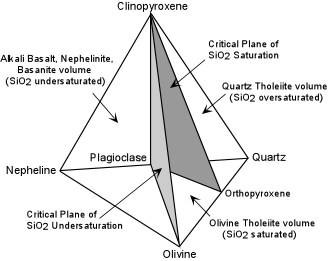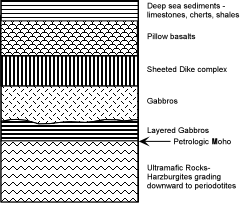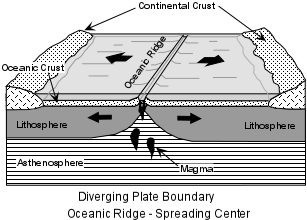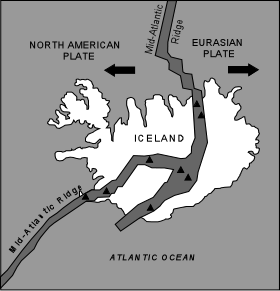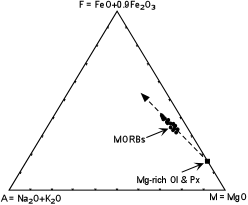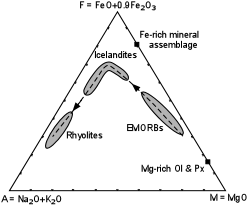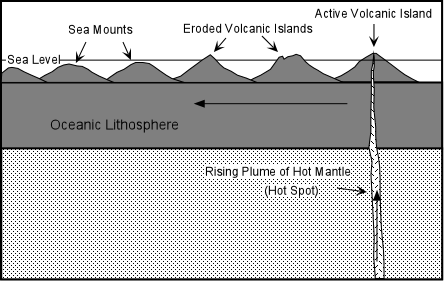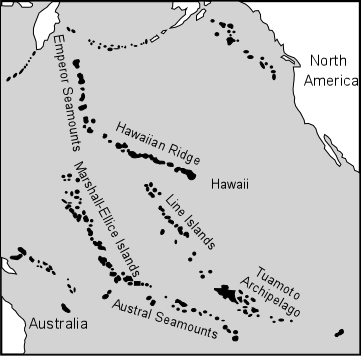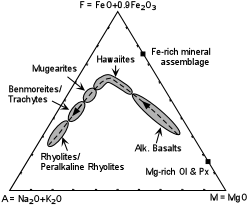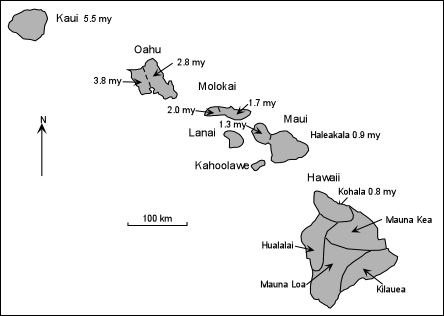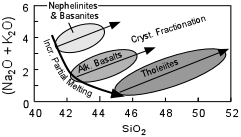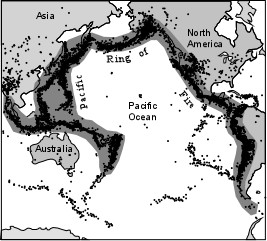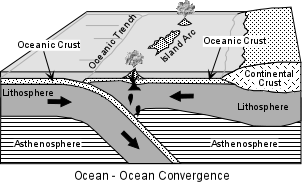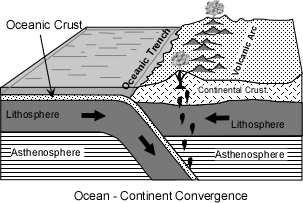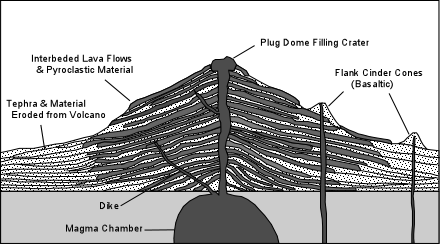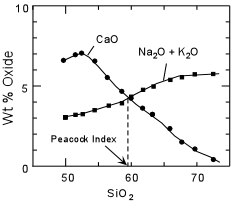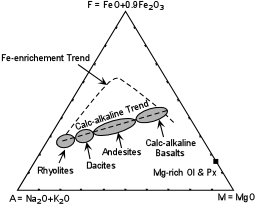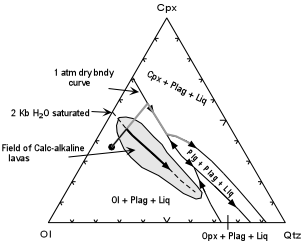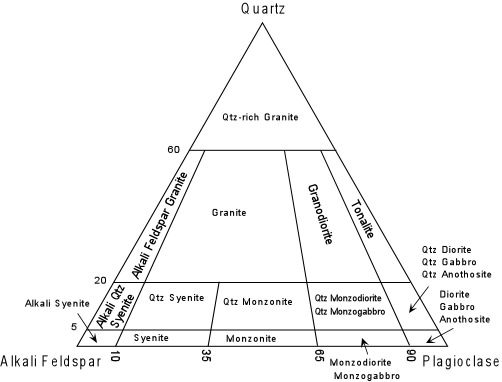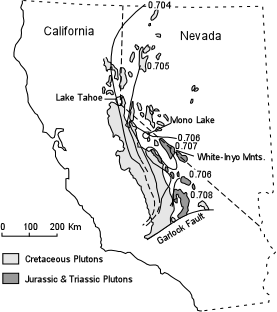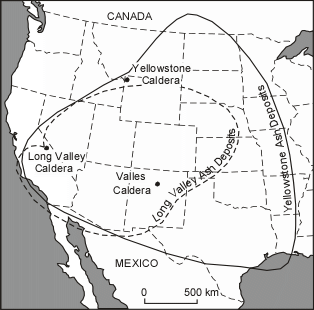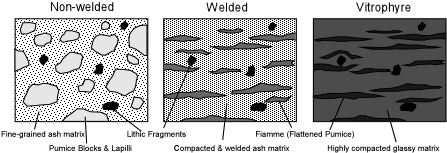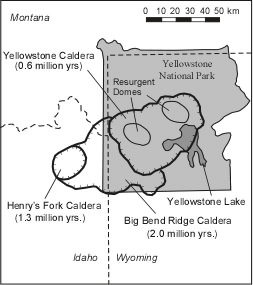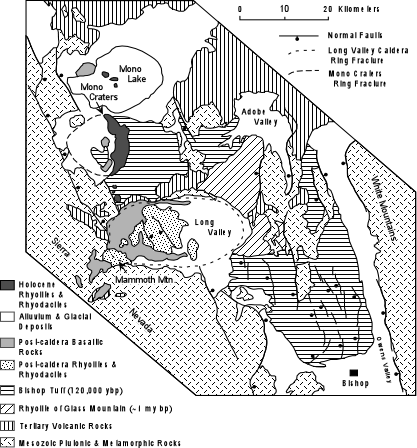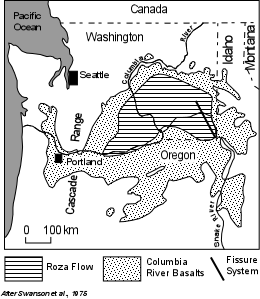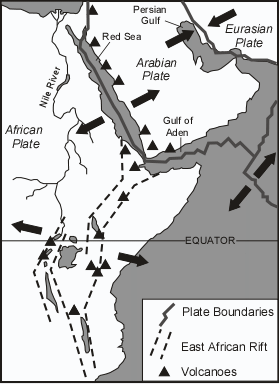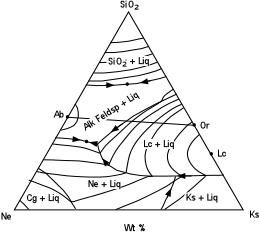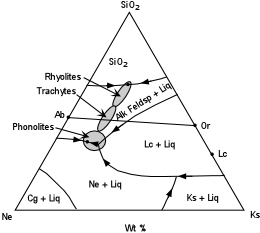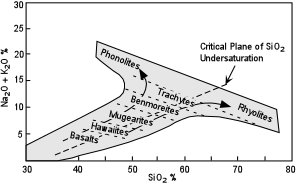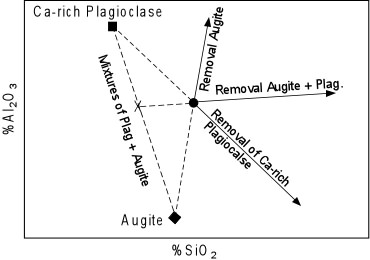Ocean Island Basalts (OIBs)
The oceanic islands are, in general, islands that
do not occur along the divergent or convergent plate boundaries in the ocean basins.
Nevertheless, EMORBs, such as those that occur in Iceland, as well as the Alkalic basalts
of Iceland have much in common with magmas erupted in the oceanic islands. In the
Atlantic Ocean, which is a slow-spreading oceanic basin, as well as in the Galapagos
Islands of the eastern Pacific Ocean, some of the islands occur close to oceanic ridge
spreading centers.
In all cases we must keep in mind that the parts of these islands that are
accessible for sampling represent only a fraction of the mass of the volcanic structures
which rise from the ocean floor at depths up to 10,000 m. Thus, as with the ocean
ridge volcanic rocks, there is a potential sampling problem.
Oceanic Islands
Most oceanic islands appear to be related to ascending plumes of hot mantle.
These plumes must be relative narrow features because they appear to operate
independent of the main convection cells that ascend beneath the oceanic ridges and
descend at subduction zones. Still, in places like Iceland on the ocean ridge, magma
production rates are high, and compositions of rocks are similar to those found in oceanic
islands. So Iceland could also be considered an oceanic island.
If these rising plumes of hot mantle remain stationary in their positions
in the mantle, they produce hot spots, as discussed previously. Hot spots are most
recognizable when they occur beneath plates that move with higher velocities. Beneath
faster moving plates, like the Pacific Plate, this results in linear chains of islands.
|
